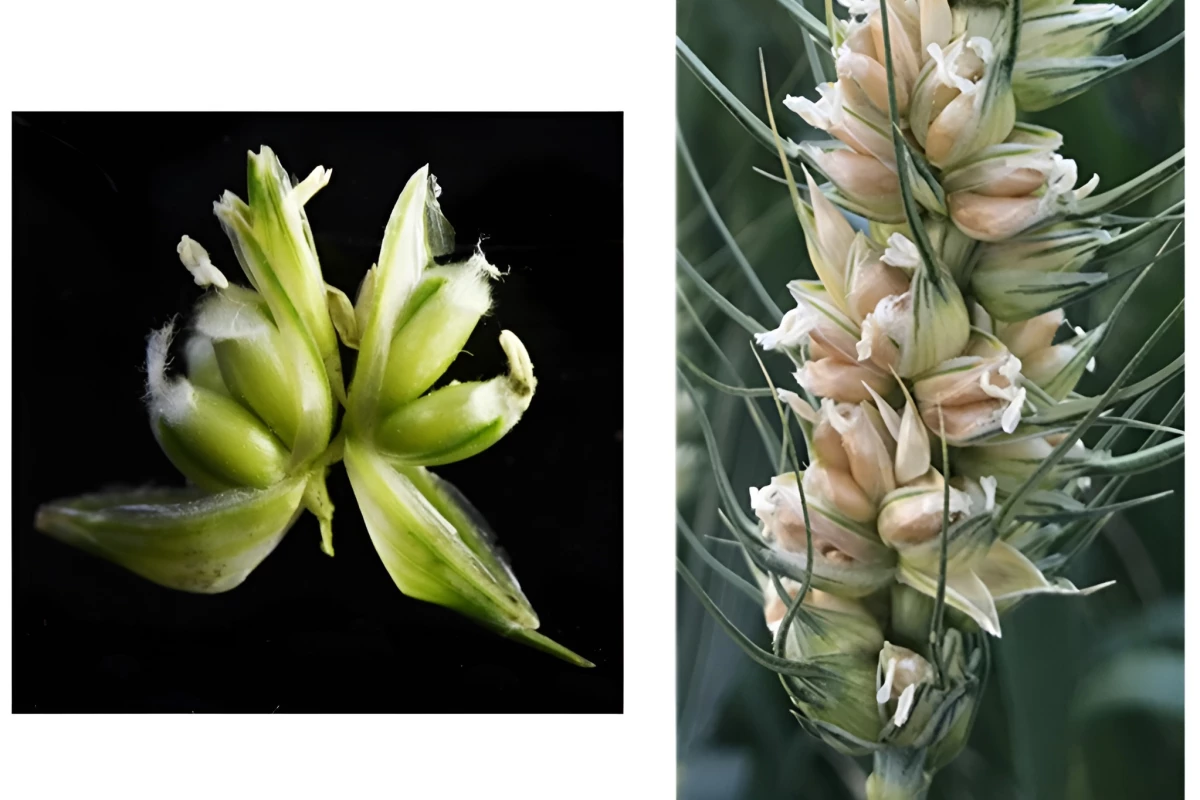Science
Genetic Breakthrough Could Triple Wheat Grain Yields

Scientists at the University of Maryland have made a significant genetic discovery that could potentially triple wheat grain yields. This breakthrough revolves around a mutant type of wheat known as multi-ovary wheat (MOV), which has the capacity to produce up to three grains per floret, compared to the single grain typically produced by conventional wheat plants.
The key to this advancement lies in understanding the genetic mechanism behind the MOV trait. Each floret in a standard wheat plant’s seed head generally produces one ovary, resulting in one grain. However, the MOV variant can produce multiple ovaries, leading to an increase in grain production. Until now, the specific genetic factors contributing to this phenomenon were largely unknown.
Through extensive research, scientists have mapped the DNA of MOV wheat and compared it to that of ordinary bread wheat. This meticulous analysis revealed the activation of a normally dormant gene known as WUSCHEL-D1 (WUS-D1) in MOV wheat. This gene plays a crucial role in enhancing the development of tissues responsible for producing additional female flower parts, including pistils and ovaries.
Implications for Wheat Production
According to Associate Professor Vijay Tiwari, co-author of the study, “Pinpointing the genetic basis of this trait offers a path for breeders to incorporate it into new wheat varieties, potentially increasing the number of grains per spike and overall yield.” By activating the WUS-D1 gene in cultivated wheat plants, researchers believe they can significantly enhance grain production, which could have far-reaching implications for global food security.
The findings are detailed in a paper published in the Proceedings of the National Academy of Sciences, underscoring the potential for genetic engineering to address agricultural challenges. With the global population projected to reach nearly 10 billion by 2050, advancements in crop yields are essential to meet rising food demands.
Future Directions in Crop Breeding
The research team plans to utilize gene editing techniques to further improve the WUS-D1 trait in wheat. This approach could lead to the development of high-yielding wheat varieties that require the same amount of land, water, and fertilizer as current crops. Such innovations are vital for sustainable agriculture, especially in regions facing environmental stress and limited resources.
As the agricultural sector seeks solutions to enhance productivity, this genetic breakthrough represents a promising avenue for increasing food supply while minimizing the environmental impact. The introduction of MOV wheat could revolutionize wheat cultivation, making it an exciting development for farmers and researchers alike.
This research not only highlights the power of genetic science but also paves the way for future advancements that could transform how we approach food production in a rapidly changing world.
-

 Business4 days ago
Business4 days agoInvestors Eye Potential $60,000 Gains with Ozak AI Token
-

 Politics5 days ago
Politics5 days agoFormer Pastor Arrested on Human Trafficking and Indecent Charges
-

 Business5 days ago
Business5 days agoQuotient Wealth Partners Adjusts Holdings in iShares Russell 1000 ETF
-

 Lifestyle5 days ago
Lifestyle5 days agoNatty from KISS OF LIFE Stuns in Micro-Shorts at Seoul Event
-

 Politics4 days ago
Politics4 days agoSkip Bayless Critiques Travis Hunter’s Game Day Baptism
-

 Entertainment5 days ago
Entertainment5 days agoUtah Residents Face Resource Shortages Amid Ongoing Government Shutdown
-

 Business5 days ago
Business5 days agoCalifornia to Ban All Plastic Bags in Grocery Stores by 2026
-

 Entertainment5 days ago
Entertainment5 days agoPete Davidson Surprises Pregnant Girlfriend with Private Jet to Concert
-

 Entertainment5 days ago
Entertainment5 days agoAce Frehley, KISS Guitarist, Passes Away at 74 After Fall
-

 Politics5 days ago
Politics5 days agoIberia Parish Sees Surge in Marriage Licenses Issued in October
-

 Science5 days ago
Science5 days agoCommunity Mourns Loss of Judith Ernst, Pioneer Educator at 81
-

 Entertainment6 days ago
Entertainment6 days agoEastside Kings Festival Celebrates Austin’s Rich Blues and Jazz Heritage









